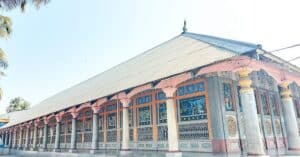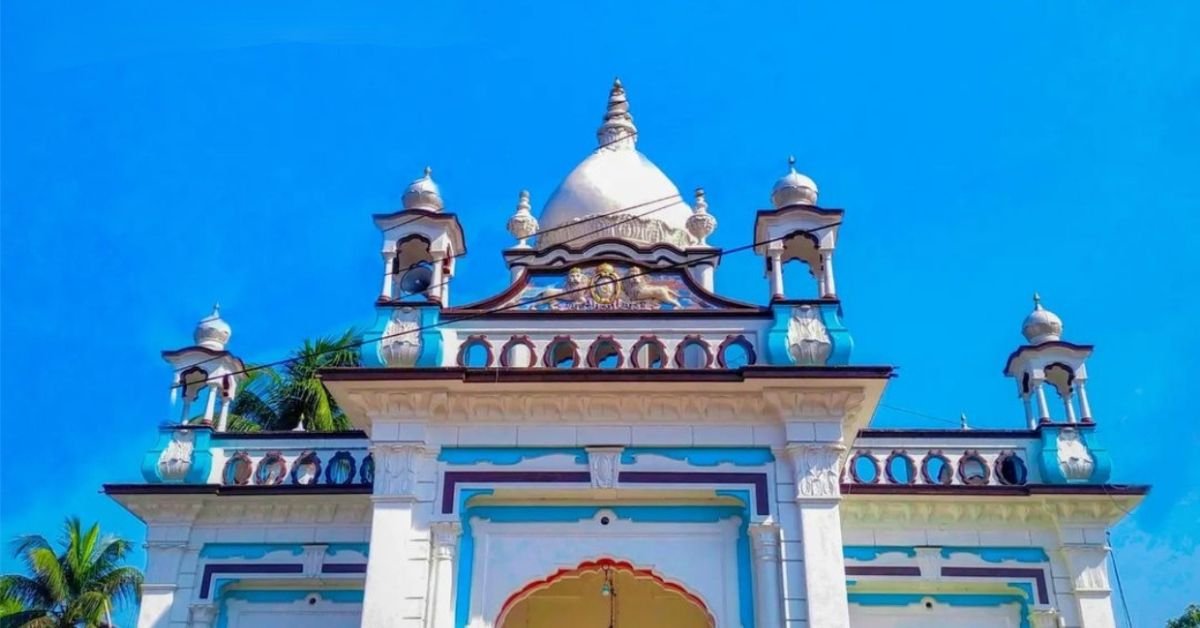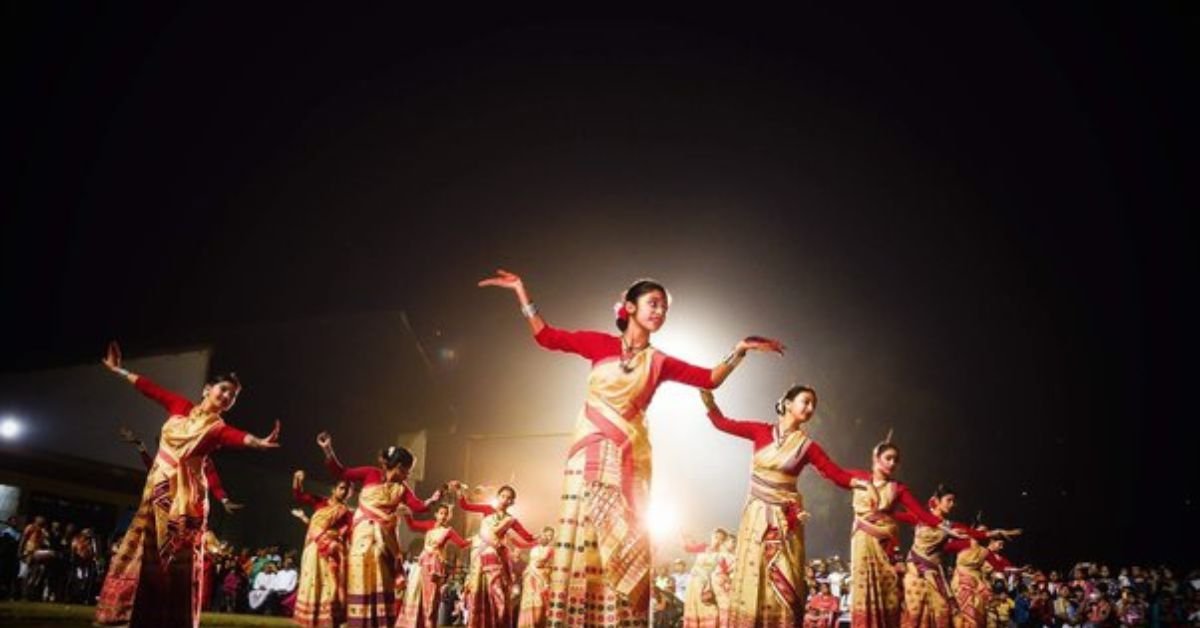Sarthebari in Barpeta district of Assam is a name synonymous with the fine art of making various utensils and artefacts using bell metal or kaah (in Assamese). Bell metal is a metal with unique combination of 78 percent copper and 22 percent tin. The famous bell metal craft of Sarthebari is an age-old tradition that dates to the Varman dynasty of Assam (5th century AD). Since then the artisans of Sarthebari area have been engaged in the bell metal making craft (kaah silpa). Anyone who takes a stroll through the village of Sarthebari can hear the sound of metal being hammered at the furnace from every household he/she passes.
History of Bell Metal Craft of Sarthebari
It is said that when Chinese scholar Hiuen Tsang visited Assam in 642 AD, King Bhaskar Varman gifted him a set of baan-baatis (traditional bowls of Assam) and kaahis (plates), as well as a pair of taals (cymbals).
However, it was during the reign of Ahom King Shiva Singha that this art form truly flourished. Royal patronage of Ahom kings at this time led to the production of both royal and ordinary items.
Later, under British rule, support for the bell-metal industry was withdrawn, and new revenue policies restricted trade to Bhutan and Tibet, two of the most profitable markets for Sarthebari’s bell metal. This marked the beginning of the decline of bell metal industry in Assam as well as in Sarthebari.
It is important to note that the bell-metal industry in Assam was not confined to Sarthebari alone. In earlier times, it extended to areas such as Raha in Morigaon district and Titabor in Jorhat district. However, over time, the craft has become geographically limited to Sarthebari.
Why is it so Famous and so Important?
Bell metal craft of Sarthebari holds immense cultural and traditional significance in Assam. All utensils used in puja ceremonies are crafted from this metal, as it is considered very auspicious. The xorai, made of bell metal, is a signature gift item as a token of love and respect, especially for guests visiting from outside Assam. The xorai is also used to make offerings to the gods.
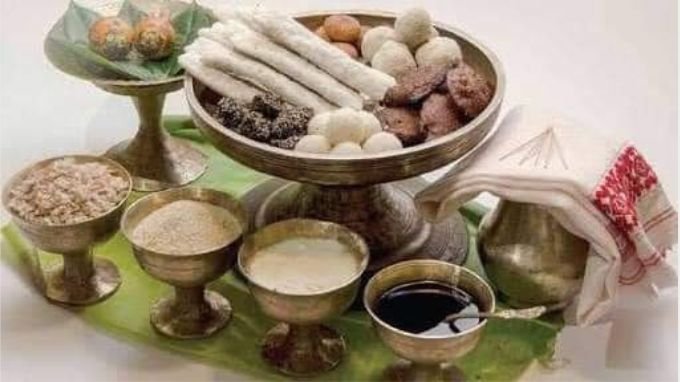
In Assamese culture, serving dishes in ban bati (mounted bowls) is regarded as the epitome of hospitality. Additionally, the bihu taal, an essential item for the Bihu dance, is also made from bell metal.
When a baby takes his or her first solids during the Annaprasanna ceremony, it is customary to gift bell metal utensils to the baby.
The craft of bell metal in Sarthebari is intricately woven into the fabric of Assamese culture, and without it, many rituals would lose their meaning.
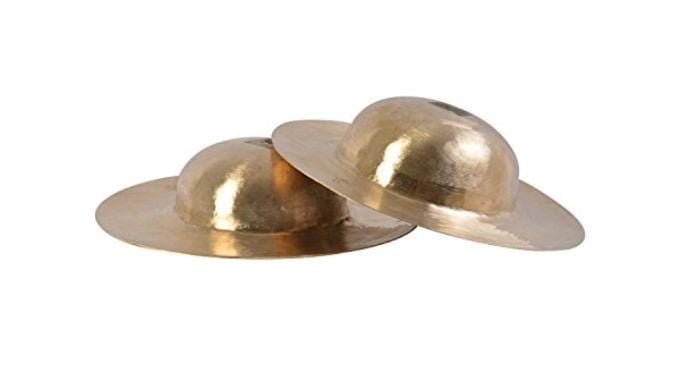
Industry Setup in Sarthebari
Even though the bell metal craft of Sarthebari is scattered around various villages around Sarthebari, the main villages are Gumura, Karagusi, Namhola, Losima, and Amrikhua.
There are basically two parts of bell metal industry in Sarthebari: jui-xaal (foundry) and gor-xaal or kohar ghar . In the jui xaal, the bell metal is produced by mixing various metals such as Copper, Tin and Iron. Inside kohar ghar, the kohars work as a unit to produce the final products.
In general, an unit has 08-10 people working together. You can see the whole industry is small scale in nature. Large scale production is impossible without government support, as lamented by the artisans. There are around 330 units in Sarthebari supporting the work of 2,500 craftsmen. On any given day, a single unit produces up to 15 kgs of bell-metal utensils.
Artisans of Bell Metal Craft of Sarthebari
In general terms, the bell metal artisans are known as Kohar. The bell metal workshop is known as gor-xaal or kohar ghar. The role of every artisan is specific and he/she is known as per the role assigned. These craftsmen inherit the knowledge from their elders and thus the industry runs on hereditary system.
The ojha kohar heads the unit, the maydhnar polishes the products, while the kaytnar carves and removes the black spots; the gureila cleans the kaan or the curve of the utensil.
In the jui-xaal(foundry), the kamorua kohar works to melt and shape the metal. After the item is suitably shaped, it is dipped in cold water before being given its final touch by the mathani. Designs and motifs are hammered onto the vessel by the dhonukaar. The average working hours for the artisans in the bell metal craft of Sarthebari is 8-10 hours.
How Bell Metal Products are Produced
The technology used in making these objects is traditional and simple. The primary tools include anvils of various sizes, known locally as balmuri, chatuli, and akue, along with hammers, pincers, files, chisels, and some minor equipment. These tools are locally referred to as Dulari, Gasha, Saria, Piri, Khanta (an iron instrument used for polishing bell metal products), and Pocker, among others. Additional raw materials include polishing substances, clay, jute fiber, rice bran, mustard oil, charcoal, borax, zinc, and shalpatra.
The entire process, from creating the mold to the final polishing, is done manually without the use of any machinery. That is why bell metal craft of Sarthebari is losing out due to competition from machine made products.
Famous Bell Metal Crafts of Sarthebari
Many festivals, rituals and beliefs of the Assamese people are centred around bell-metal. The essential xorai and bota used for religious offerings or social purposes, many rituals and beliefs of the Asomiya people are centred around bell-metal.
There are as many as 40 types of bell metal products are made in Sarthebari ranging from varieties of Thal or Kahi (dishes), Dofola Kahi (large dishes), Bati (bowl), Ban Bati (mounted bowls), Kalah (pot), Tal (cymbals), and Bota (a type of tray).
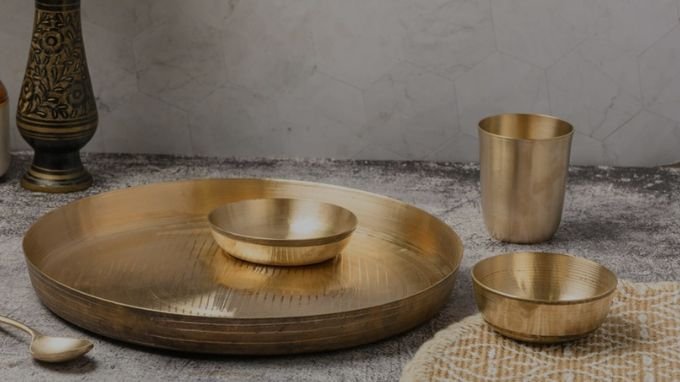
In addition to daily use items, the bell metal craft of Sarthebari has been proudly producing some of the rare and traditional handivraft items of Assam. These traditional items include: Daponi (a traditional item used during Assamese marriage), Bihu Taal, Xorai, Bota, Maihang kaahi and baati, Jaat kaahi (which has a three-legged brass ring and a plate to match, on which rice is served), Temi-bata (small lime container), Pikdani (pittoon) etc. You can explore bell metal products on this website.
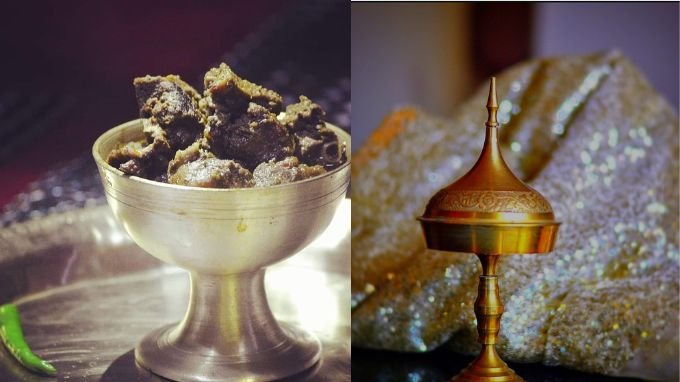
Decline of Bell Metal Craft of Sarthebari
The craftsmen of Sarthebari face significant challenges, including the widespread availability of cheaper alternatives made from aluminum, plastic, and other materials, which are gradually taking over the cottage industry market.
The rising cost of raw materials, particularly tin and copper, further exacerbates the situation. Consequently, about 90% of the bell-metal in Sarthebari is recycled, with traders collecting broken utensils from households to melt down into metal ingots. Additionally, coal, another crucial raw material, is illicitly obtained from neighboring Meghalaya. There are major drawbacks that are pulling the industry down.
Without Government measures, the survival of bell metal industry of Sarthebari is at stake.
Artisans’ Appeal to the Government
The artisans propose that the government subsidize coal and raw metals (tin and copper) to the artisans rather than offering a one-time loan waiver (the State government had previously announced a waiver of five crore rupees in loans for Sarthebari’s bell-metal traders), as this would provide a more sustainable solution.
Granting a GI tag to bell metal craft of Sarthebari is seen as a positive step toward addressing these challenges.
Where To Buy Bell Metal Products From Sarthebari
If you’re looking to buy bell metal from Sarthebari offline, the main wholesale market is in the Fancy Bazar area of Guwahati. The Assam Co-Operative Bell Metal is the primary wholesaler. Additionally, within Guwahati city, you can visit G S Traders Bell Metal Store located in the Chandmari area for a variety of options.
For online purchases, two established and genuine shops dealing in bell metal craft of Sarthebari are https://www.kahibati.com/ and https://brahmaputrafables.in/. You can also explore Amazon.com, but the authenticity of the products is not guaranteed, so it’s advisable to check the seller’s details thoroughly before making a purchase.




